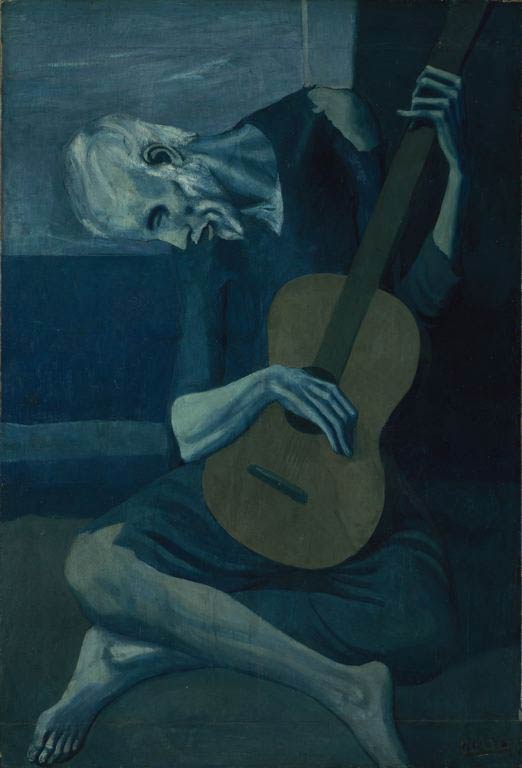| The Old Guitarist | |
|---|---|
 |
|
| Artist | Pablo Picasso |
| Year | 1903 |
| Medium | Oil on panel |
| Location | Art Institute of Chicago, IL, USA |
| Dimensions | 48.4 in × 32.5 in |
| 122.9 cm × 82.6 cm | |
The Old Guitarist was painted in 1903, shortly following Picasso’s friend suicide. After this period, Picasso painted many somber works, including the ill, poor, and individuals who were cast out of society. The work was initially created in Madrid, and the distorted approach and style taken, is something that follows El Greco forms of art.
The Focus
The man holding the guitar, is a blind man, holding the round guitar close to his body. The brown body of the guitar, is the only color change that is made throughout the entire painting created by Picasso. The guitar is meant to fill the space between the figure, as he is aware of his situation, and his blindness and poverty, are both obvious to the man as he is playing the guitar. The thin body frame of the man in the painting is a form that is common in his home country of Spain. The long, thin limbs, and posture, are reminiscent of El Greco pieces that have a similar design and style.
Additional Meanings
The painting also has the ghostly and a mysterious presence about it. The somber style is one that is common amongst many of the pieces that he created during this time period. Many believe that the art and the painting were initially intended to be of a woman. She appears as if she is possibly seated, and possibly is upset or worried about something going on. Other than the face and the legs, not much else is clearly visible on the painting, making it difficult to determine what he was originally trying to create in the art form.
The Old Guitarist is one of the many pieces by Picasso, that were painted in this somber manner, shortly following the period of the loss of his close friend.